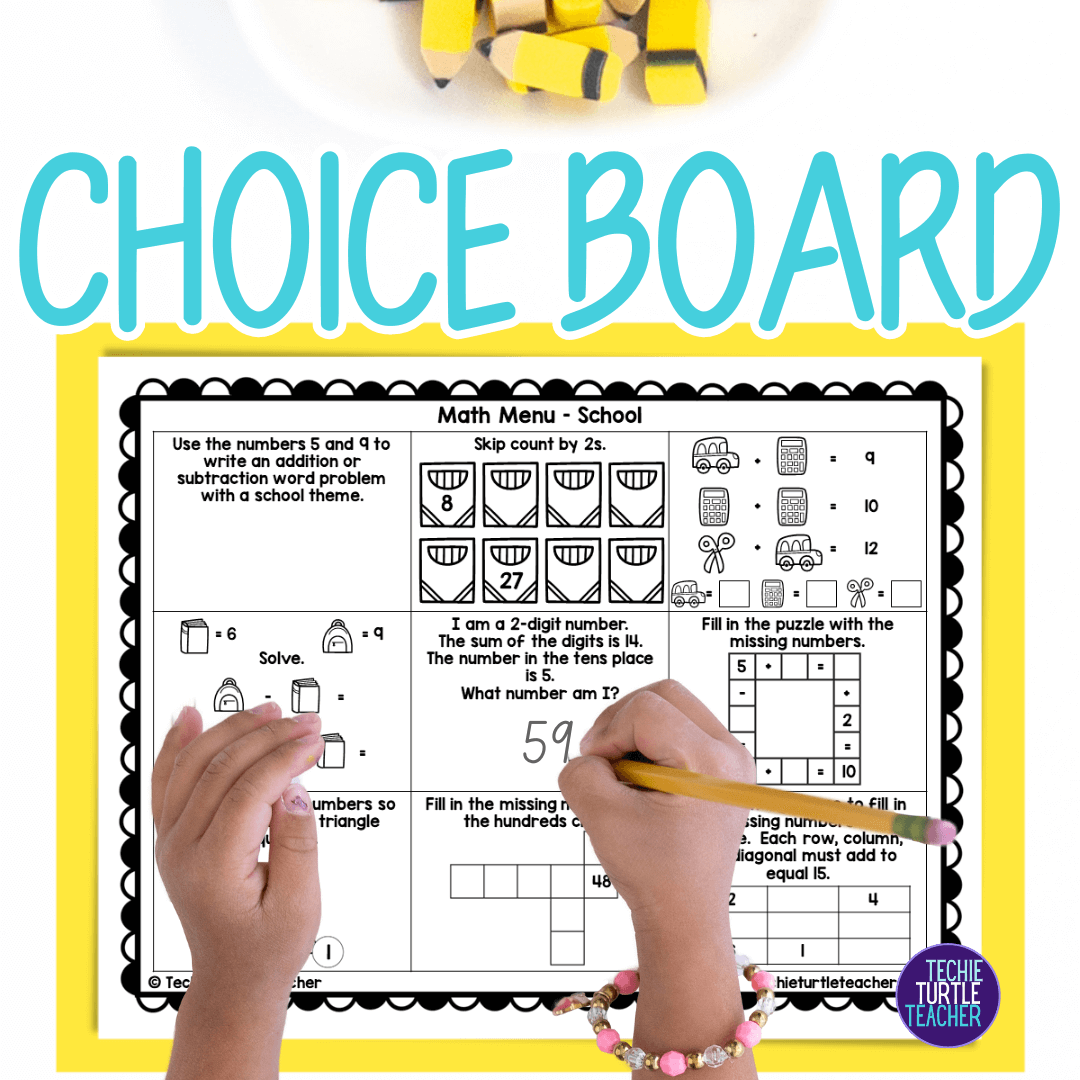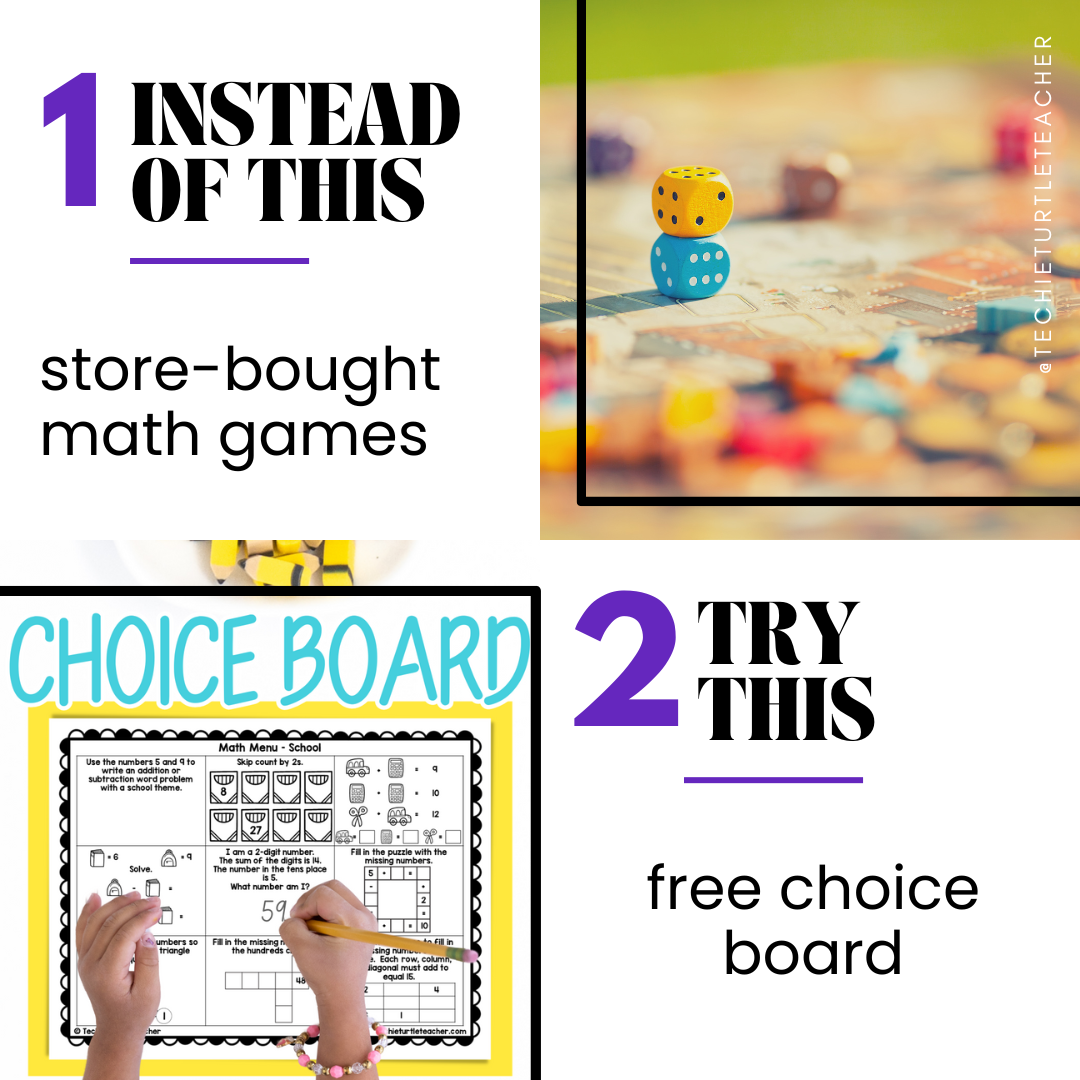Are you looking for a way to keep your students engaged while fostering independence during math time?
Choice boards are the answer!
They not only provide structure and motivation for young learners but also free up time for you to focus on small groups.
In this post, you’ll learn what choice boards are, why they’re essential, how they encourage independence, and why they’re a better option than store-bought games.
Plus, if you’re wondering whether your students are ready for more independent work, I’ve got tips for that too!
What Are Choice Boards?
Choice boards are a visual menu of activities that give students the freedom to choose how they want to engage with learning tasks.
Typically set up in a grid format, each square presents a different activity aligned with a specific learning goal. Students get to choose what activities they want to complete.
The beauty of choice boards is in their versatility. You can easily differentiate activities to match the varying abilities of your students, ensuring that everyone is challenged and engaged.
Whether they’re working on addition, subtraction, or understanding place value, choice boards help meet each learner’s needs.
Why Use Choice Boards in Your Classroom?
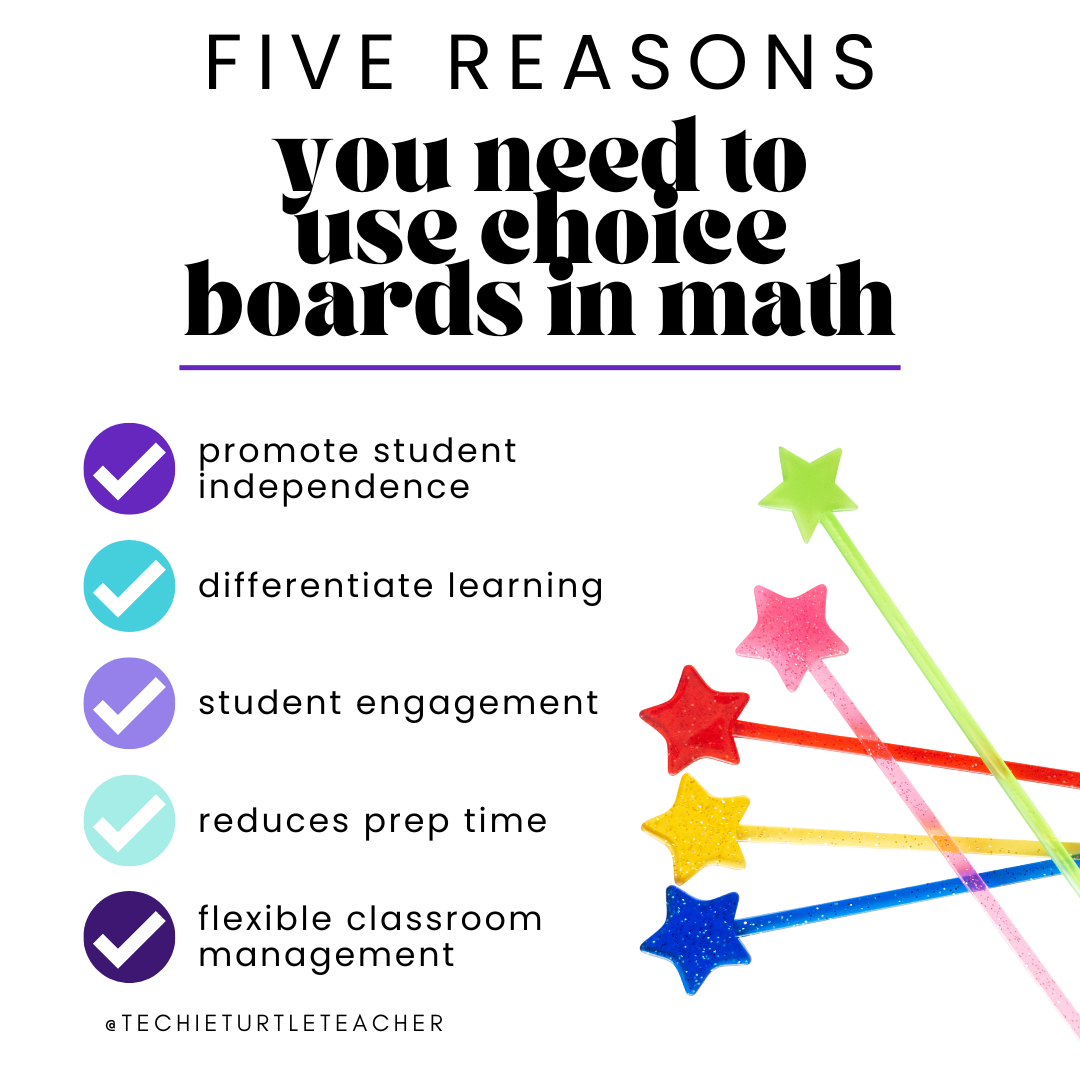
If you’re tired of repetitive lessons that don’t hold your students’ attention, choice boards could be the solution. Here are five reasons why choice boards should become a key resource in your classroom:
1️⃣ Promote Student Independence
Choice boards allow students to take charge of their learning. While they focus on completing activities, you can give your undivided attention to small groups or individual students needing extra help.
2️⃣ Differentiate Learning
Not every student learns the same way or at the same pace. Choice boards offer a variety of activities that range in difficulty, so you can ensure that every student is challenged according to their abilities.
3️⃣ Boost Student Engagement
Giving students the freedom to choose which activity they complete makes learning exciting. They feel empowered by their choices, and that motivation translates into better focus and effort.
4️⃣ Reduce Prep Time
Prepping for lessons doesn’t have to be time-consuming. Once you create a choice board, it can be used repeatedly throughout the year, saving you hours of lesson planning.
5️⃣ Flexible Classroom Management
While students work independently on their choice boards, you gain the flexibility to manage the classroom more effectively.
Whether you’re working with small groups or managing classroom behaviors, choice boards offer structure that helps the entire class run smoothly.
How to Encourage Independence
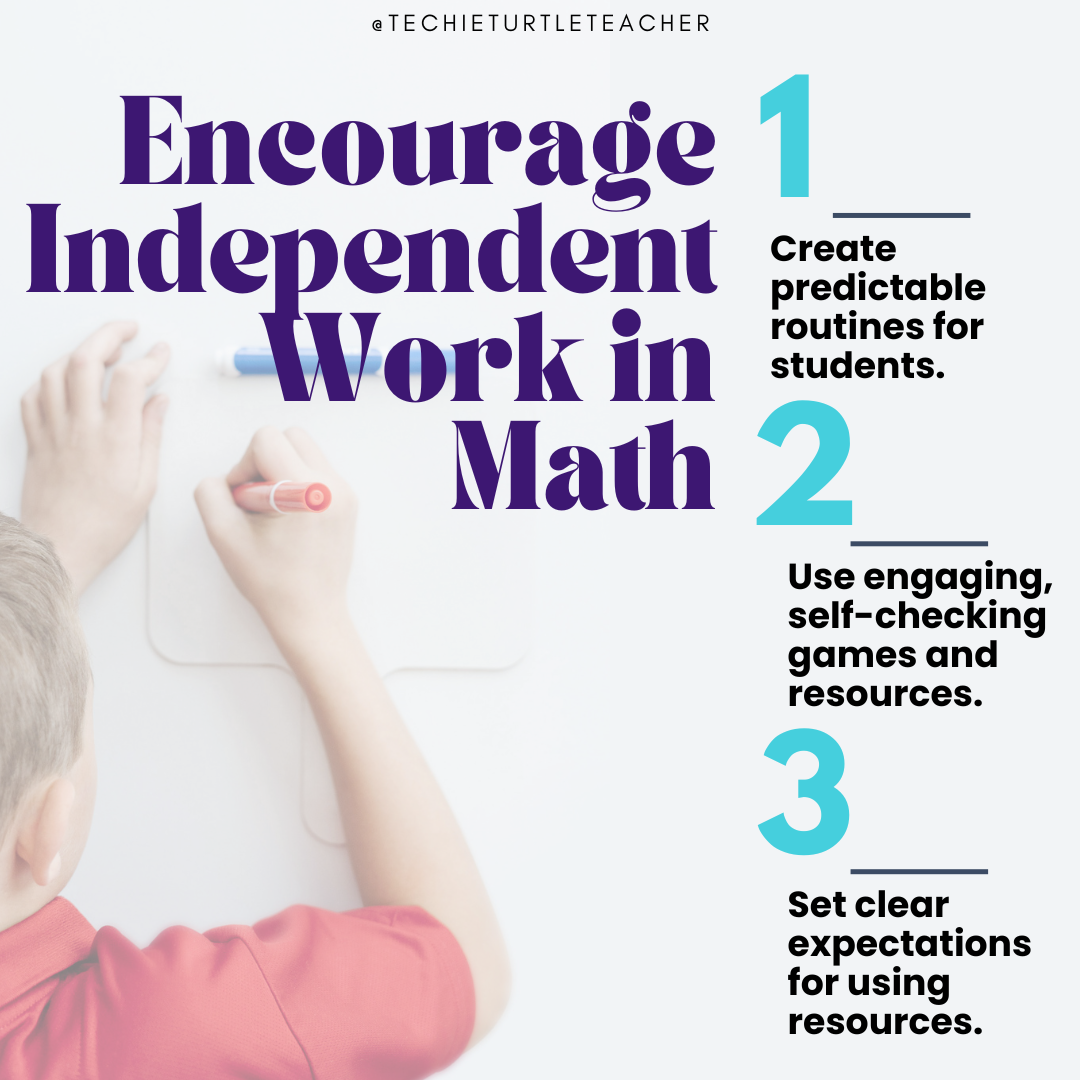
One of the key benefits of choice boards is how they foster independence in young learners. However, it’s important to have the right strategies in place to set students up for success. Here are three simple ways to help your students work independently:
1️⃣ Create Predictable Routines
When students know what to expect, they feel more confident in their ability to complete tasks without assistance. Establish a clear routine for how choice boards work, and watch your students thrive!
2️⃣ Use Engaging, Self-Checking Games
Include activities that provide instant feedback, such as self-checking games. This allows students to correct their mistakes on their own and builds their confidence in problem-solving without needing constant help from you.
3️⃣ Set Clear Expectations
Students need to understand how to use the choice board effectively. Go over the instructions for each activity in advance and make sure they know what is expected. When the expectations are clear, students become more self-sufficient.
Choice Boards Are Better Than Store-Bought Games
Have you ever spent money on store-bought math games that didn’t quite meet your classroom’s needs? You’re not alone. While store-bought games can be fun, they often lack the flexibility that choice boards offer. Here’s why choice boards are a better option:
1️⃣ Tailored for Your Students
Choice boards can be customized to fit the specific learning goals of your students. You have control over the content, ensuring that every activity aligns with what your class needs to learn.
2️⃣ Low-Prep and Reusable
Once you’ve created a choice board, you can print it and use it over and over again. No more buying new games every time your class moves on to a new topic. Choice boards offer long-term value with minimal prep.
3️⃣ Engaging and Flexible
Themed activities on a choice board can be more engaging than a generic game. They give students the opportunity to explore different topics in a way that feels fresh and exciting.
4️⃣ Saves Time and Money
Forget spending your budget on costly games that might not get used. A free or low-cost choice board is not only practical but also tailored to your classroom’s specific needs.
Wondering If Your Students Are Ready for Independent Work?
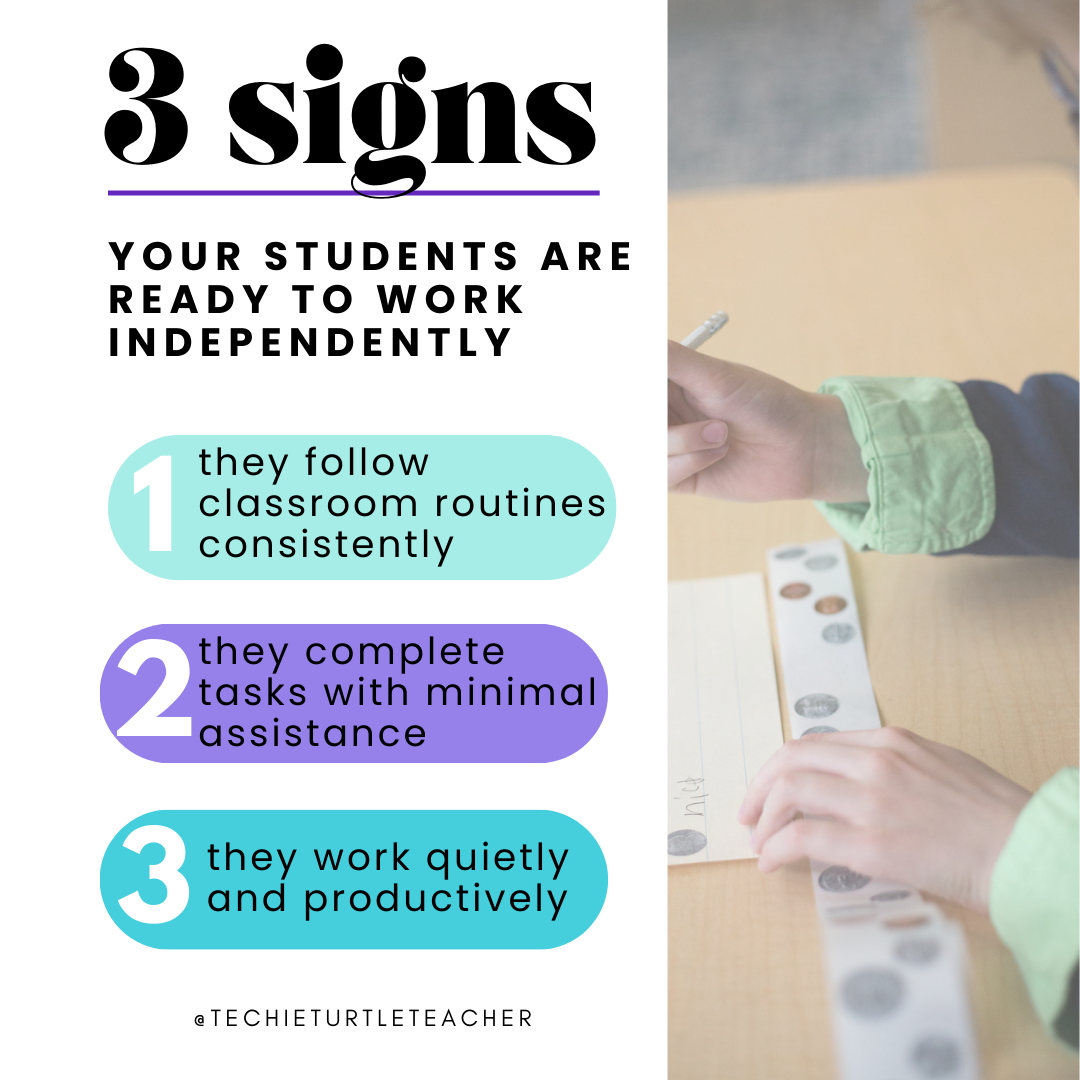
Introducing more independence in your classroom is a gradual process, and you might be wondering if your students are ready to take on the responsibility. Here are three signs that your students are prepared to handle independent work:
1️⃣ They Follow Classroom Routines Consistently
Students who understand the routines and procedures of your classroom are more likely to navigate choice board activities on their own without needing constant guidance.
2️⃣ They Complete Tasks with Minimal Assistance
If your students can start and finish assignments with little to no help, they’re ready to take on more independent tasks. Choice boards offer the perfect opportunity for them to show off their self-sufficiency.
3️⃣ They Work Quietly and Productively
Students who can stay focused and complete work quietly are primed for self-directed learning. Choice boards provide them with structured tasks that encourage concentration and productivity.
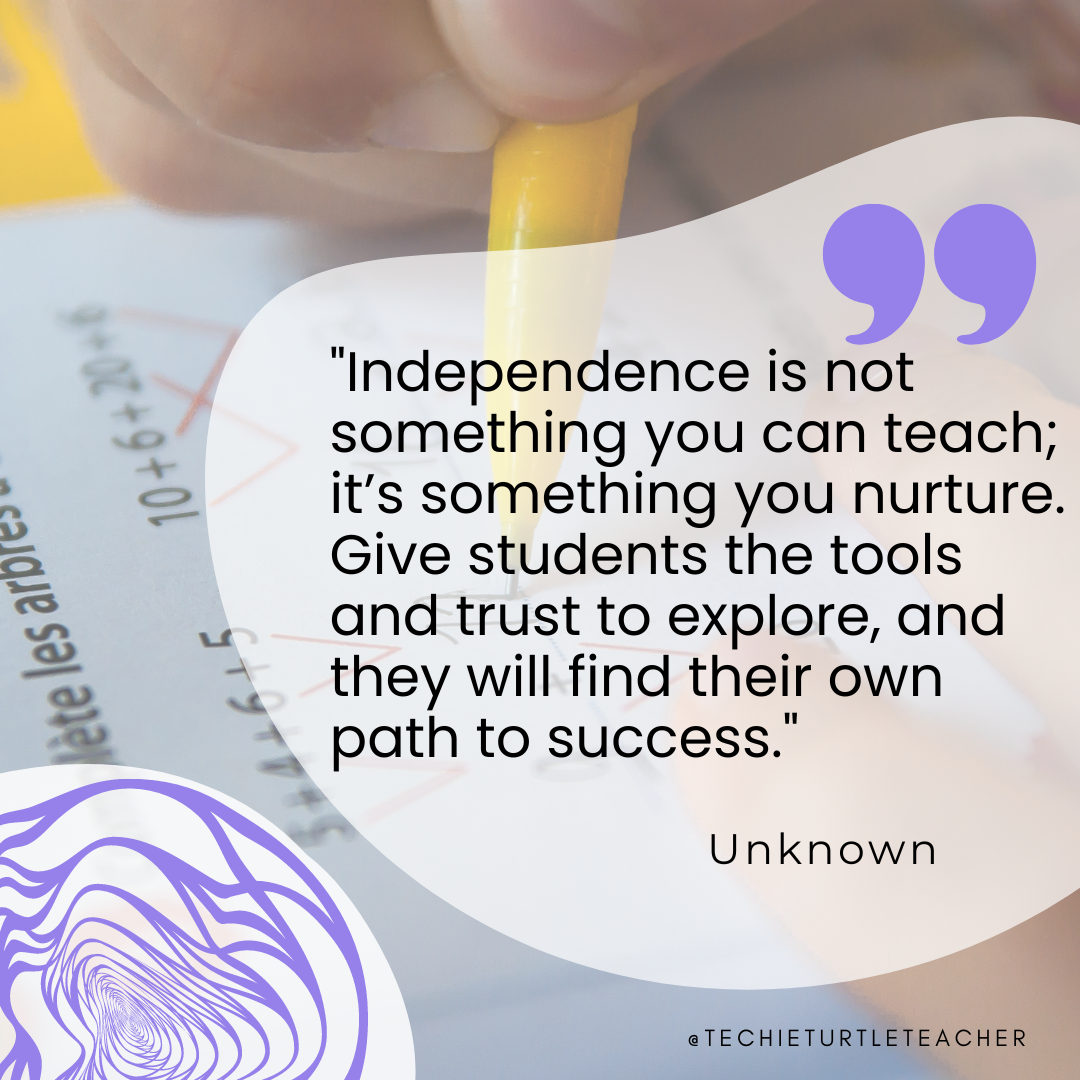
Incorporating choice boards into your K-2 math classroom can change how your students learn.
Not only do they promote independence, but they also provide differentiation, increase engagement, and streamline your prep time.
Plus, they’re a better investment than store-bought games.
So, if you’re ready to make math time smoother and more effective, start using choice boards today!
Looking for a free choice board to try? Download my FREE math choice board designed specifically for K-2 students and see the difference it makes in your classroom!
Choice Boards
If you want more choice boards, check out my TPT store to find other ones to use with your students.
Pin this to Pinterest for later


